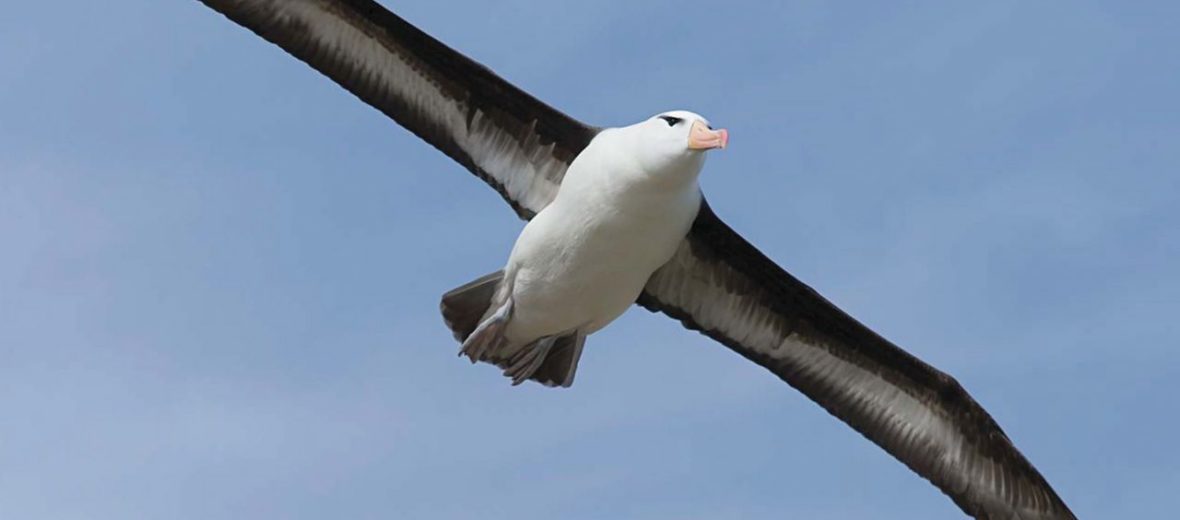
Being a master of soaring flight, the albatross is capable of living out its first 6+ years without ever setting foot on land. They are able to soar for great distances without even having to flap their wings. It has been documented that they can even soar for hours before having to land in the ocean or on land. There are 22 known species of albatross in the world today; all of which are listed as threatened, near-threatened, vulnerable, or endangered by the IUCN. Their dwindling numbers can be attributed to bycatch (getting caught in fishing nets), over-fishing, large amounts of hunting, and introduction of invasive species.
First the Stats…
Scientific name: Diomedea epomophora
Weight: Up to 25 lbs.
Length: Up to 4.4 feet
Wingspan: Up to 12 feet
Lifespan: Up to 42 years
Now on to the Facts!
1.) The ever-changing climate has had an impact on ocean wind patterns the world over. This change has actually benefited these birds in that they are able to soar faster and longer, allowing them to catch more fish. With less time spent on hunting there is more time available to mate. This has caused a spike in the bird’s numbers. This is good, but only temporary.
2.) Most of the albatross species can be found in the southern hemisphere with only 3 known species located in the North Pacific.
3.) The wandering albatross has the largest wingspan of any bird in the world!
4.) They are monogamous (mate for life) but still engage in infidelity, on occasions.
5.) Their primary prey are fish, crabs, krill, and squid.
But wait, there’s more on the wandering albatross!
6.) These giants spend up to 80% or more of their lives at sea.
7.) As eggs and chicks, rats and feral cats prey on them. As fledglings and adults bull sharks are their primary predator.
Did you know…?
Albatrosses can fly up to 67 mph!
8.) How do they manage to stay in flight for so long? Well, they fly head into the wind. When they catch an updraft, they soar upward. Then shift their trajectory and glide downward. This is then repeated and allows them to glide for hundreds of miles without even having to flap their wings.
9.) Females give birth to a single white egg. Both parents raise the young chick and can fly up to 10,000 miles just to bring 1 meal back home!
10.) Finding food in the open ocean is easier when you have the sense of smell that an albatross has. They can smell prey up to 12 miles away.
Now a Short Wandering Albatross Video!
Also, check out the Critter Science YouTube channel. Videos added frequently!
Want to suggest a critter for me to write about? Let me know here.



